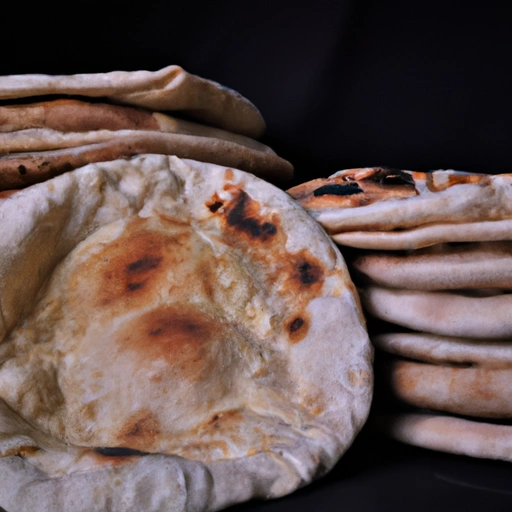Pita
Description

Pita is a type of leavened bread that originates from the Middle East and is widely known for its pocket-like structure, which is created when steam puffs up the dough during the baking process. This pocket makes pita exceptionally versatile, as it can be filled with various ingredients to create sandwiches or used as a scoop for dips and spreads. Pita is typically round and flat and varies in size, but is generally about 6-8 inches (15-20 cm) in diameter.
Common uses
Pita is commonly used as a vehicle for dips such as hummus and baba ganoush, as a wrap for kebabs and gyros, or simply as a side to complement a meal. It is also a popular choice for making quick and easy pizzas or as a substitute for sandwich bread.
Nutritional value
Calories
A typical serving size of pita bread (one whole pita, approximately 57 grams) contains around 165 calories.
Protein
Pita provides about 5.5 grams of protein, which is essential for muscle growth and repair.
Fat
Pita bread is relatively low in fat, with around 0.7 grams per serving.
Carbohydrates
Carbohydrates are the primary macronutrient in pita, with about 33 grams, mostly in the form of starches.
Vitamins
Depending on the flour used, pita can contain various B vitamins, especially if made with enriched flour.
Minerals
Minerals such as calcium, iron, and magnesium can be found in pita bread, varying with the fortification and type of flour used.
Health benefits
The fiber in whole wheat pita bread can aid in digestion and promote a feeling of fullness, potentially aiding in weight management. Pita made from whole grains also has a lower glycemic index than white bread, which can help maintain steady blood sugar levels.
Potential risks
For individuals with gluten intolerance or celiac disease, traditional pita bread made from wheat flour can cause health issues. Additionally, overconsumption of white pita bread can lead to potential weight gain and blood sugar spikes due to its high carbohydrate content.
Common recipes
Pita is used in various recipes, from traditional Middle Eastern dishes like falafel sandwiches and shawarma to Greek pitas filled with gyro meat or souvlaki and served with tzatziki sauce.
Cooking methods
Pita can be baked, toasted, or grilled to achieve a warm, slightly crispy texture. It can also be cut into wedges and baked to make pita chips.
Pairing with other ingredients
Pita bread pairs well with Mediterranean and Middle Eastern flavors such as olive oil, feta cheese, olives, and grilled meats. It also complements dips like hummus and tzatziki.
Summary
Pita bread is a versatile and widely-consumed bread with ancient roots in the Middle East. It has numerous culinary uses, from serving as a wrap for meats and vegetables to being a vessel for dips and spreads. While pita is generally nutritious, especially when made with whole grains, its gluten content and carbohydrate density can present dietary challenges for some individuals. Nonetheless, its inclusion in a balanced diet can offer an enjoyable and culturally rich culinary experience.